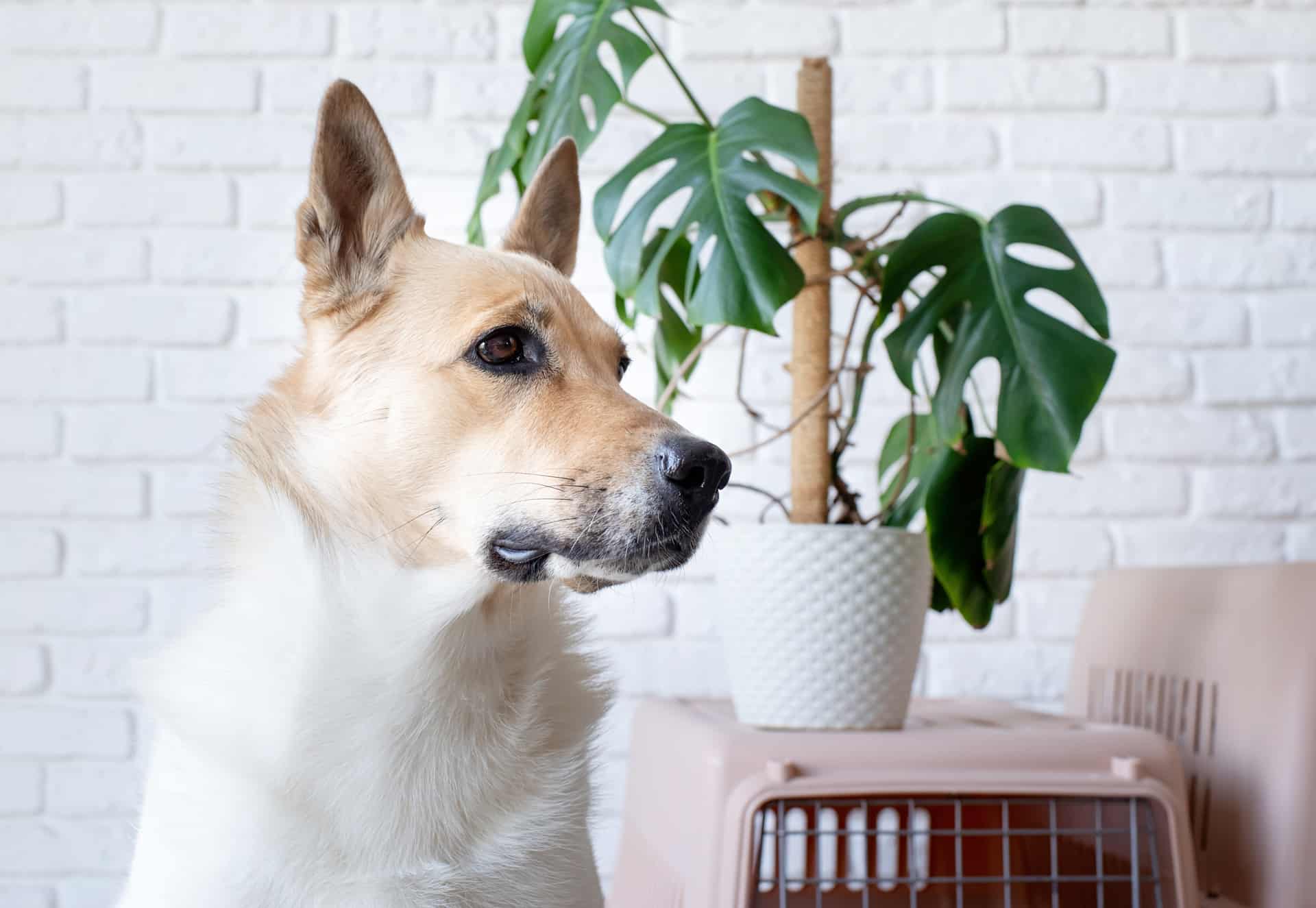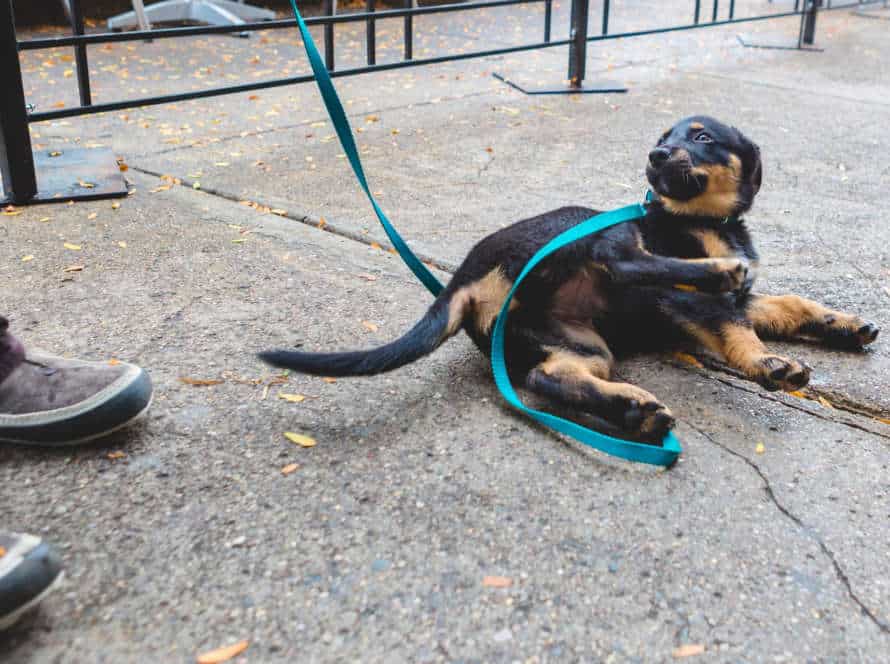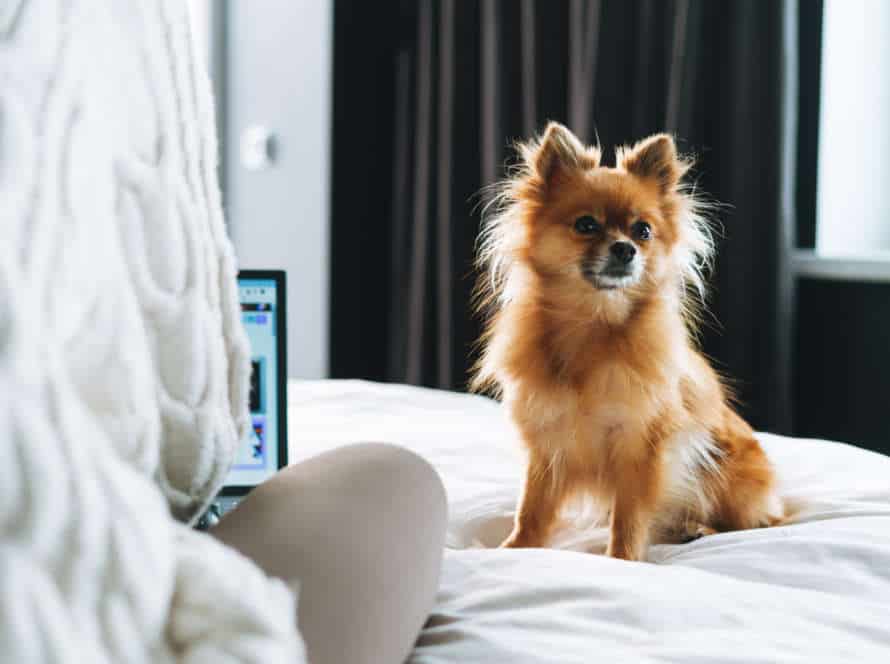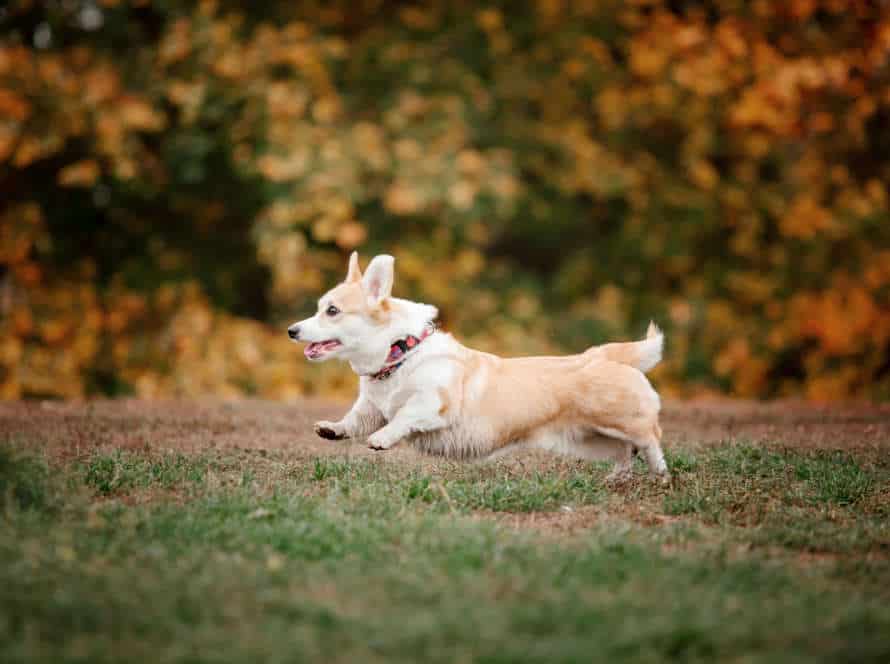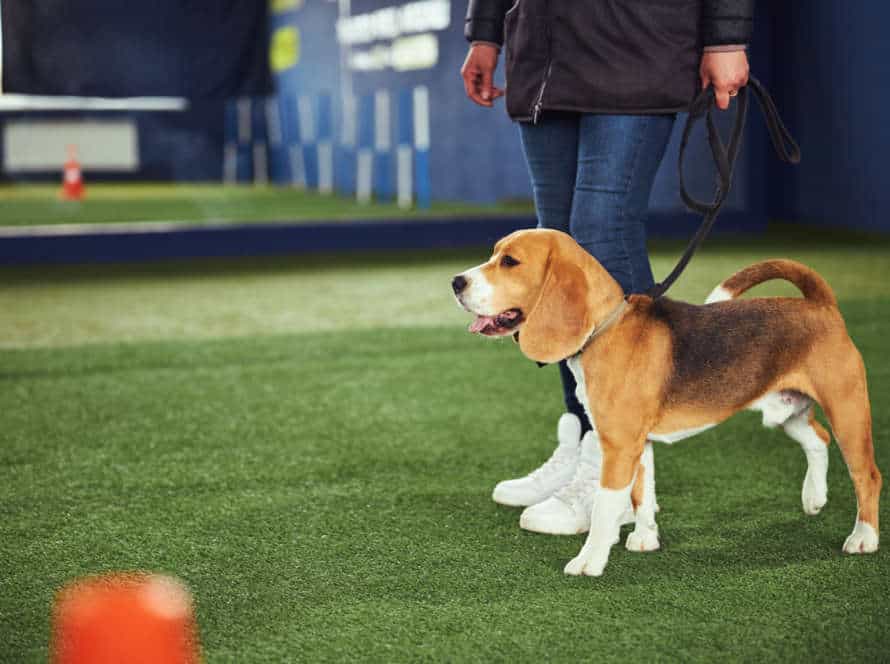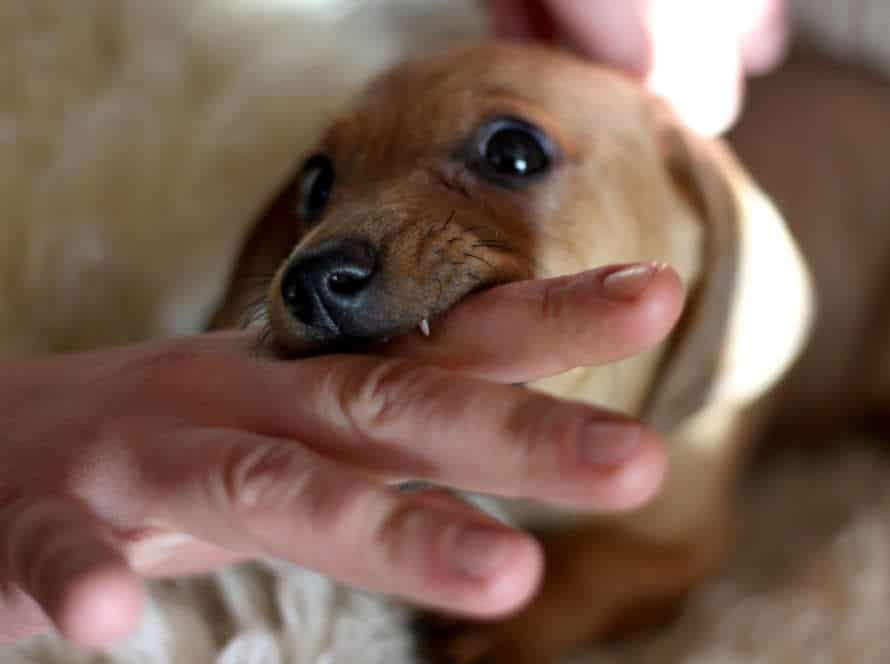Understanding Crate Training for Your Puppy
Crate-training your pup is essential for helping them adapt to their new abode. Crates provide a safe and secure spot for your puppy. You can use this as a tool to house-train them, and make sure they’re not getting up to mischief while you’re away.
Let’s look at the basics of crate-training and how to get your pup on the right track.
Benefits of crate training
Crate training is a popular way to train puppies and has many advantages for both the pup and its owner. Benefits include:
- A secure spot for the pup: Crate training gives the puppy a cozy, safe place to stay where they can rest without fear of getting hurt or into trouble.
- Potty training help: Crate training can help teach the puppy to hold its bladder and only go in designated areas.
- Decreased stress/anxiety: The crate can have a calming effect on the pup, reducing stress and anxiety.
- Stops destructive behavior: Crate training can prevent destructive behavior like chewing and digging by providing a safe, secure place for the puppy when unsupervised.
When crate training, make sure you select a suitable size crate and put it in a comfortable, visible spot. Also, increase the pup’s time in the crate gradually.
Choosing the right type of crate
When it comes to crate training your pup, the type of crate is key for their comfort and safety. Three main types to choose from:
- Wire crates – easy ventilation and visibility. Can collapse for storage. Not good for escape-prone pups.
- Plastic crates – more enclosed. Cozy den-like atmosphere. Handle for transport. Not breathable in warm climates.
- Soft-sided crates – lightweight and easy to transport. Not recommended for chewing/scratching pups.
Choose based on needs/preferences. Make sure it’s the right size. Put in a quiet space for crate training success.
Introducing your puppy to the crate
Introducing your pup to their crate is a must-do for crate training. It should be done slowly & positively so they feel safe & comfy in their space. Here’s how:
- Put the crate in a main spot in your home, so they can see & smell it.
- Get them familiar by leaving treats, toys, or a soft blanket inside it, with the door open.
- Reward them with treats & praise for entering or sniffing around.
- Once they’re comfy, start closing the door for short periods while you’re close by. Gradually increase the time the pup spends in the crate with the door closed.
At night, make sure it’s in a quiet, comfy spot away from distractions & loud noises. To help them feel safe, put a soft blanket or shirt with your scent in the crate. Pro tip: Be patient & consistent for long-term success.
Choosing the Right Location for Your Puppy’s Crate
Selecting the correct spot for your puppy’s crate is super important. It should be a secure and comfy spot for them to relax. Here are things to think about when deciding the best place in your home. Remember, the crate is a safe haven for your pup!
Importance of crate placement
Crate location is a must for your pup’s well-being and success with crate training, especially at night. Here are some key hints to think about:
- Choose a spot that is calm, peaceful, and away from any distractions that could stop your pup from sleeping.
- Don’t put the crate in a place with a draft or direct sunlight which could make your pup feel uncomfortable.
- Select somewhere where you can watch your pup but still let them have their privacy.
- Make sure the crate is big enough for your pup to move around but not too roomy that it encourages them to use it as a toilet. It should always be used for sleeping and relaxing.
- Remember to place some comfy bedding or a cushion in the crate.
These easy steps will aid your pup in successful crate training and make sure both you and your furry pal get a good night’s sleep.
Considerations for choosing the crate location
Choosing the right spot for your pup’s crate is key for their safety and comfort. Plus, it will help with crate training at night. Here are some things to keep in mind:
- Pick a calm, quiet place in your home. Away from distractions and high traffic areas. This will give your pup the chance to rest.
- Look for natural light and air circulation. Enough sunlight and fresh air. But, make sure not to put the crate in direct sunlight or near drafts.
- Think about the temperature. Not too hot or too cold. Between 65-75 degrees Fahrenheit should be comfortable for your pup.
- Keep the crate close at night. Put it in or near your bedroom. This will make your pup feel safe and secure.
By considering these points when picking a crate location, you can make sure your pup has a safe and comfortable environment that will help with successful crate training.
Avoiding common mistakes
Picking a spot for your pup’s crate can be tricky! There are common errors to avoid, to guarantee success in crate training your pup. These errors can help your pup feel safe in their crate instead of it being a punishment. Here are the mistakes to avoid:
- Don’t put the crate in a busy area with a lot of noise.
- Don’t place the crate too far from home, making the pup feel lonely.
- Don’t put the crate in an area with no ventilation or natural light.
- Make sure the crate is sized right for your pup.
By avoiding these mistakes, your pup will feel relaxed and secure in the crate and the crate training will be successful.
Best Practices for Crate Placement at Night
The crate is essential for your puppy. Correct placement of the crate at night is the answer to successful training. Put the crate in the correct spot for your pup to have a secure and pleasant place to sleep. This also provides boundaries that aid house training.
Let’s look at the best rules for crate placement at night:
- Place the crate in a quiet corner, where it can be a cozy and secure retreat for the puppy.
- The crate should be big enough for the puppy to turn around comfortably but not too large to allow it to urinate or defecate in one corner and sleep in another corner.
- Consider placing a soft mat or blanket on the bottom of the crate for added comfort.
- Place the crate near your bedroom so that the puppy won’t feel lonely and can feel your presence.
- Avoid placing the crate near doorways or high traffic areas to avoid disturbing the puppy’s sleep with any noise or activity.
Choosing the right room for the crate
Picking the perfect room for your pup’s kennel is key for their safety, comfort and to dodge any undesirable behavior. Here are some top tips to bear in mind when situating your pup’s kennel in a room at night:
- Go for a room that’s quiet, dark, and temperature-controlled.
- Opt for a room near your bedroom, so your pup can still hear and smell you.
- Evade positioning the kennel in a high-traffic area or a room with a lot of noise.
- Make sure there’s sufficient space around the kennel to stop it from feeling cramped.
- Make certain the room is puppy-proofed, with no cords or items that could harm your pup.
- Pro tip: Picking the right room for your pup’s kennel and making sure it is warm and safe can assist them to feel more secure, which leads to better sleep and behavior.
Avoiding busy areas or high traffic zones
When setting up a crate for your puppy at night, avoid busy areas. This is to ensure a successful crate training experience. Here are a few reasons why:
- Puppies need a quiet environment to sleep in. Busy areas can make them anxious and restless. Resulting in difficulty to sleep.
- Busy areas can increase the risk of accidents if they get overexcited or scared.
Choose a quiet and low-traffic area instead. A corner in the bedroom or a quiet hallway will help them feel safe. Thus, making crate training a positive experience for both you and your furry friend.
Ensuring proper ventilation and temperature control
Ventilation and temperature control are key for a pup’s wellbeing in its crate throughout the night. Here are the best practices for crate placement:
- Pick a spot with plenty of air flow to keep your pup cool and comfy.
- Avoid direct sunlight or heat sources like radiators, which can make it too hot.
- Use a fan or AC to regulate the temp and boost air circulation.
- Cover the crate with a light, breathable blanket or towel for privacy and security.
Monitor your puppy’s behavior and adjust ventilation/temp as needed. Pro tip: Gradually crate train your pup with positive reinforcement and make sure the crate is a safe and pleasant place.
Creating a Comfortable and Safe Environment for Your Puppy
Creating a comfy and safe space for your pup is key for their growth. One of the top things you can do to guarantee your pup’s wellbeing is considering crate placement. Having a secure and inviting place for your pup to sleep is significant not only for their protection, but it can help them de-stress and sleep more soundly at night.
Let’s discuss the best techniques for arranging your pup’s crate for nighttime.
Adding bedding and toys to the crate
Your pup’s crate should be a comfy and secure space they like to spend time in. Adding bedding and toys is an effortless way to make a snug atmosphere for your furry pal.
Here are some tips to remember:
- Bedding: Pick soft and washable material, like a blanket or towel, for the crate. Don’t use anything that could choke your puppy or be bad if it gets eaten.
- Toys: Give your pup safe and tough toys to play with in the crate. Stay away from toys that are too tiny or have sharp edges that could hurt them. Change the selection of toys to keep your pup entertained and interested.
- Placement: Make sure the crate is located in a quiet place in your home where your puppy can relax undisturbed. Avoid places in your house that are drafty or crowded.
- Size: Choose a crate that fits your puppy. It should be spacious enough for them to stand, turn around, and lie down comfortably, but not so big that they use it as a bathroom.
Remember, a nice and safe crate will help lower your pup’s anxiety and make crate time positive.
Making sure the crate is secure
Securely fixing the crate is essential for a comfy & safe puppy environment. Here are some tips for night-time crate placement:
- Choose a crate that fits your pup.
- Find a quiet spot, free from commotion & away from cold breezes.
- Secure the crate so it won’t tip or slide.
- If you’re using a wire crate, cover it with a towel or blanket for security & privacy.
- Give your pup access to water, but take the bowl out a few hours before bed.
- Introduce them to the crate gradually, starting with a short period & extending it over time.
- Remember, the crate should be a peaceful, secure place for your puppy to relax.
Avoiding any potential hazards around the crate
For a cozy & secure environment for your pup, be aware of potential hazards when setting up their crate for the night.
- Keep electrical cords & outlets away from the crate.
- Ensure the crate is stable.
- Take away small objects & debris from around the crate.
- Select an appropriate size for the crate; too small & they won’t move around, too big & they could use it as a toilet.
- Choose a silent corner of the home where your puppy won’t be bothered by noise or hustle.
These tips will guarantee your pup is safe & comfortable in their crate at night, helping in their training & progress.
Common Challenges and Troubleshooting Tips
Crate placement can be a puzzle! Training your puppy can bring common challenges. Does your pup refuse to sleep in the crate? Does it bark all night?
Here are some tips to help your puppy feel comfy with their crate. Troubleshooting can get you there!
Separation Anxiety
Text:
Separation anxiety is a common challenge for puppy owners when crate training. But, there are tips to help.
- Begin with gradual training. Place treats and toys in the crate and increase the time spent there slowly.
- Position the crate in a quiet and comfortable space away from busy spots in the house.
- Set a nighttime routine for your pup: a bathroom break before bed and a comfy blanket or toy when placed in the crate.
- Let your puppy out early in the morning to avoid accidents and anxiousness.
The goal? Associate the crate with positive experiences and gradually increase time spent there.
Constant barking or whining
Puppy owners often struggle with their pup’s barking and whining, especially at night when they’re in their crate. This can cause major sleep troubles – both for the pup and the owner.
Placing the crate in the right spot can help your pup feel more secure and less likely to bark or whine. Here’s how:
- Put the crate in a quiet area – away from any distractions. Make sure there’s no drafts, sunlight, or extreme temperatures.
- Give the crate a comfortable feel – with bedding and toys.
- Before bedtime – make sure your pup takes a potty break and has had enough playtime.
- Put the crate close to you at night – so they can hear and feel your presence.
- Be patient and consistent with crate training – reward your pup for good behavior.
With the right crate placement and training, your pup can have a good, restful night’s sleep.
Difficulty with potty training while in the crate
Potty training a pup can be tricky. But, with a few tips, success is within reach!
- Make sure the crate is just the right size for them.
- Put it in a quiet and safe area.
- Also, give your pup time to potty before and after being in the crate.
- Take away food and water a few hours before bedtime to reduce mess.
- And use positive reinforcement when your pup goes potty where they should.
With regular training and patience, your pup will learn the crate is a good place and potty training will be easier.
Frequently Asked Questions
1. Where should I place my puppy’s crate at night?
It is best to place your puppy’s crate in a quiet and dark room where they will not be disturbed. Avoid placing the crate near any drafts or windows.
2. How big should the crate be for my puppy?
The crate should be big enough for your puppy to stand up, turn around, and lie down comfortably. However, it should not be too big where they have too much space to move around or eliminate in the crate.
3. Should I leave my puppy’s crate open at night?
No, it is best to keep the crate door closed at night to prevent your puppy from wandering around and potentially getting into trouble. It also helps with potty training as they will learn to hold their bladder during the night.
4. How can I make my puppy comfortable in their crate at night?
You can make your puppy’s crate more comfortable by adding a soft blanket or bed, a favorite toy, and ensuring they have access to water if needed. You can also cover the crate with a blanket to create a den-like atmosphere.
5. Can I put my puppy’s crate in my bedroom at night?
While it is okay to place your puppy’s crate in your bedroom, it is important to remember that they may whine or bark at night to get your attention. If this happens, it is best to ignore them and not provide attention as it reinforces the behavior.
6. How long can I keep my puppy in their crate at night?
A puppy can typically hold their bladder for their age in months plus one. For example, a 3-month-old puppy can hold their bladder for up to 4 hours. It is important to take them out for potty breaks as needed and not leave them in the crate for too long.

